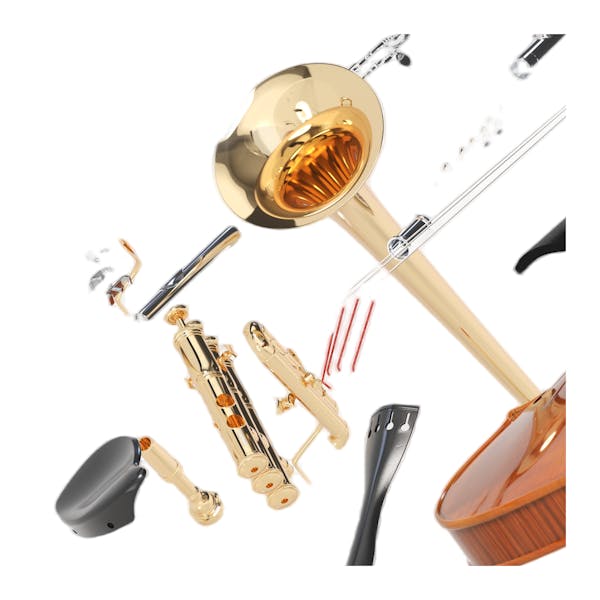Orchestral Swarm
The tidal orchestra
The tidal orchestra
A new standard in orchestral sample library innovation, this will significantly expand your existing orchestral palette to include a huge variety of totally unique textures. As an alternative to using only straightforward long notes, this library draws upon the pointillistic effect of having multiple players perform short notes at random intervals to create an undulating swell of sound performed in real time, for inspiring results.
Taking our Swarm approach, but adapted for the orchestra, it gives access to even greater detail by utilising the huge variety of articulations and playing styles of orchestral instruments, recorded at the famous British Grove Studios. It will give your compositions a liquid dynamic that dances alongside the picture. This library has been created exclusively in collaboration with Bleeding Fingers, and is featured in Blue Planet II and Hans Zimmer X Radiohead collaboration (ocean) bloom.
In this page:
- Hard drive delivery available at checkout
- You can buy now and download any time
 Spitfire Audio App required
Spitfire Audio App required
7 instrument sections
6 mic signals
64 articulations
Kontakt Player
Listen to Orchestral Swarm
This library is an innovative collaboration with Bleeding Fingers (Planet Earth II, Sons Of Liberty, Roman Empire: Reign Of Blood), who wanted to create this library to use for the BBC’s flagship series: Blue Planet II. Their concept was to record multiple players performing random short notes of the same pitch. The effect is a granular 'cloud' of notes — beautiful, long sonic textures created from layers of micro-moments, to be used in place of more traditional long notes. A perfect soundtrack to epic, panoramic scenes, as featured in the groundbreaking television show.
Spitfire knows this approach well - we used this technique in our existing Swarm libraries. This opportunity pushed us towards a new territory on a grander scale, combining the Swarm technique with the power of an orchestra. We delivered an initial library quickly and in secret for the team at Bleeding Fingers to use exclusively for the show. Hans Zimmer and Radiohead even went on to use it as part of their “(Ocean) Bloom” collaboration. We then later returned to the studio to capture even more with the orchestra, including short notes and expanded techniques and layers, to create a comprehensive tool for media composers.
If you tire of static sounding longs, or have fallen out of love with shorts ostinatos, this new textural approach to orchestral sampling will breathe new life into your arrangements. Join the pioneers of modern concert music and scoring to enter a new league of orchestral composition.

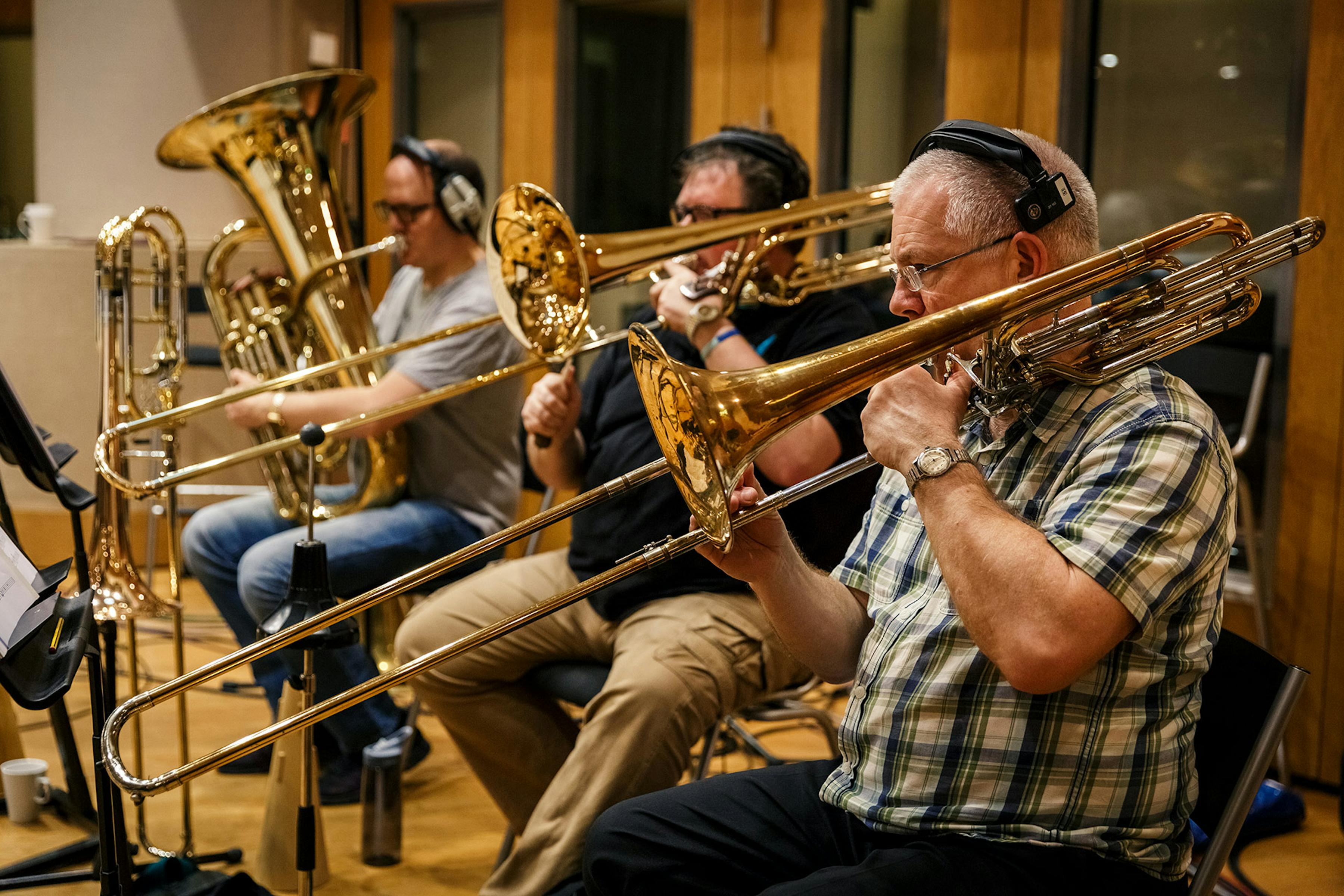
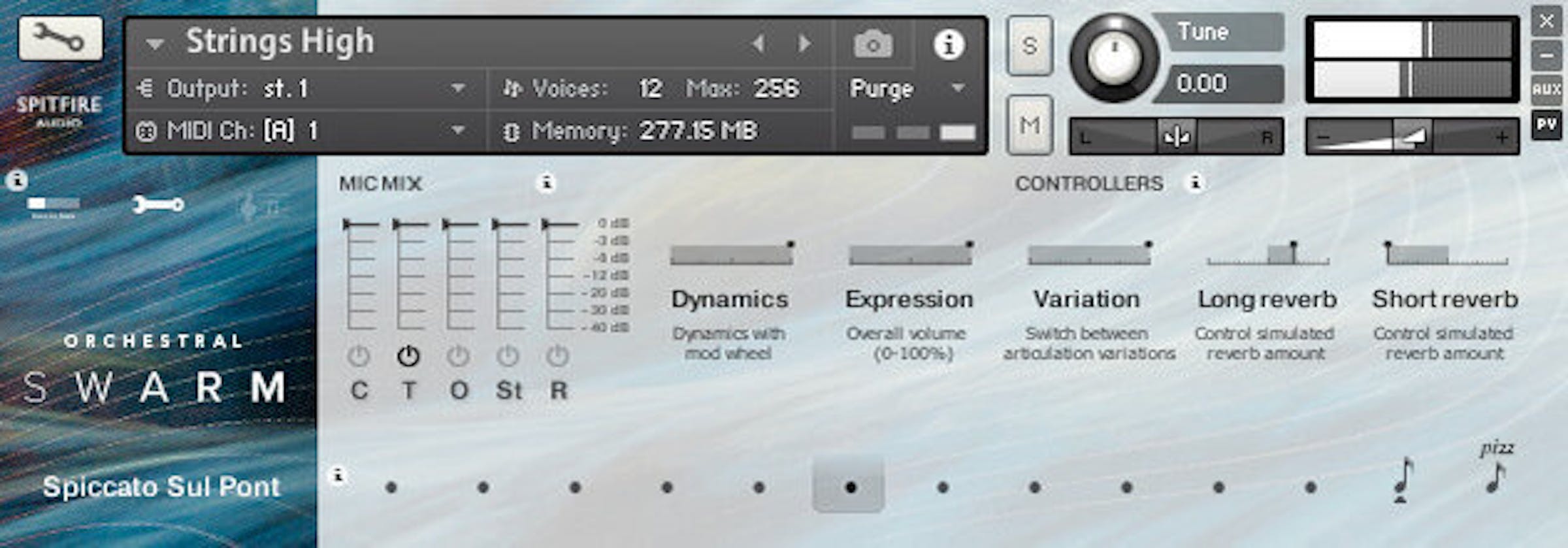
The overview panel
This is the main interface for melodic instruments. Its default view displays all available playing techniques, has a simple microphone mixer and includes the main feature controllers.
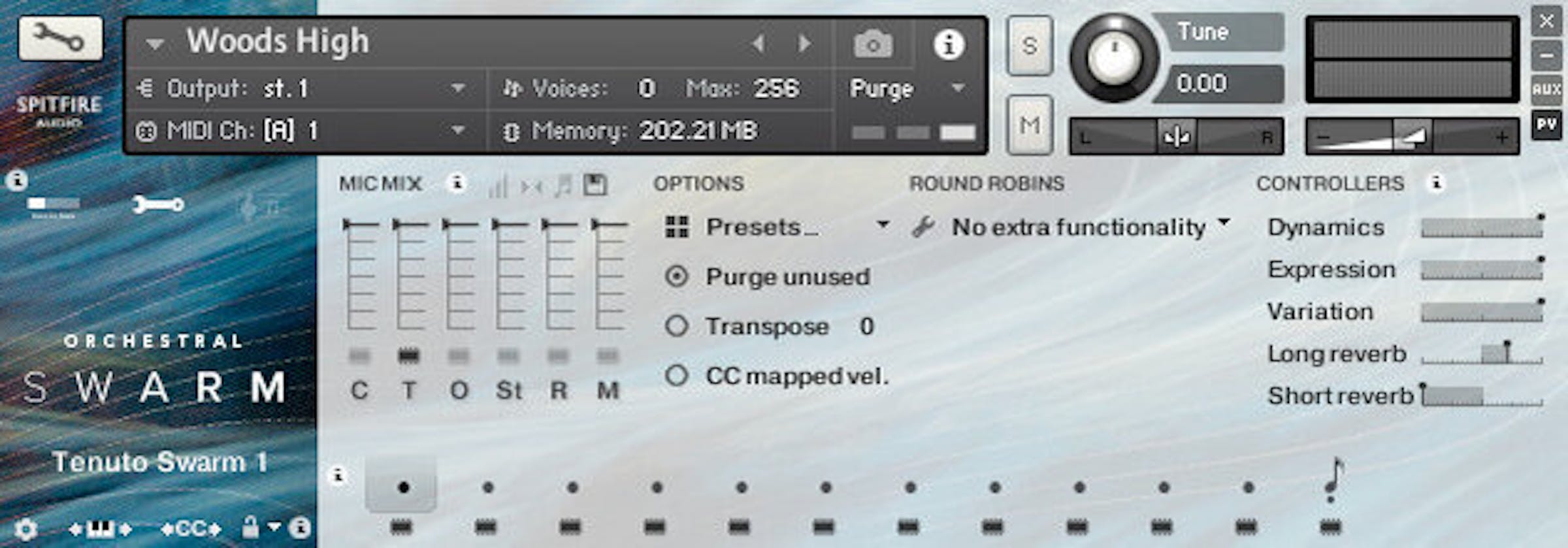
General controls panel
This view allows further in-depth control of the instrument, showing all available signals and feature controllers, as well as the ability to purge techniques from memory to reduce system usage.
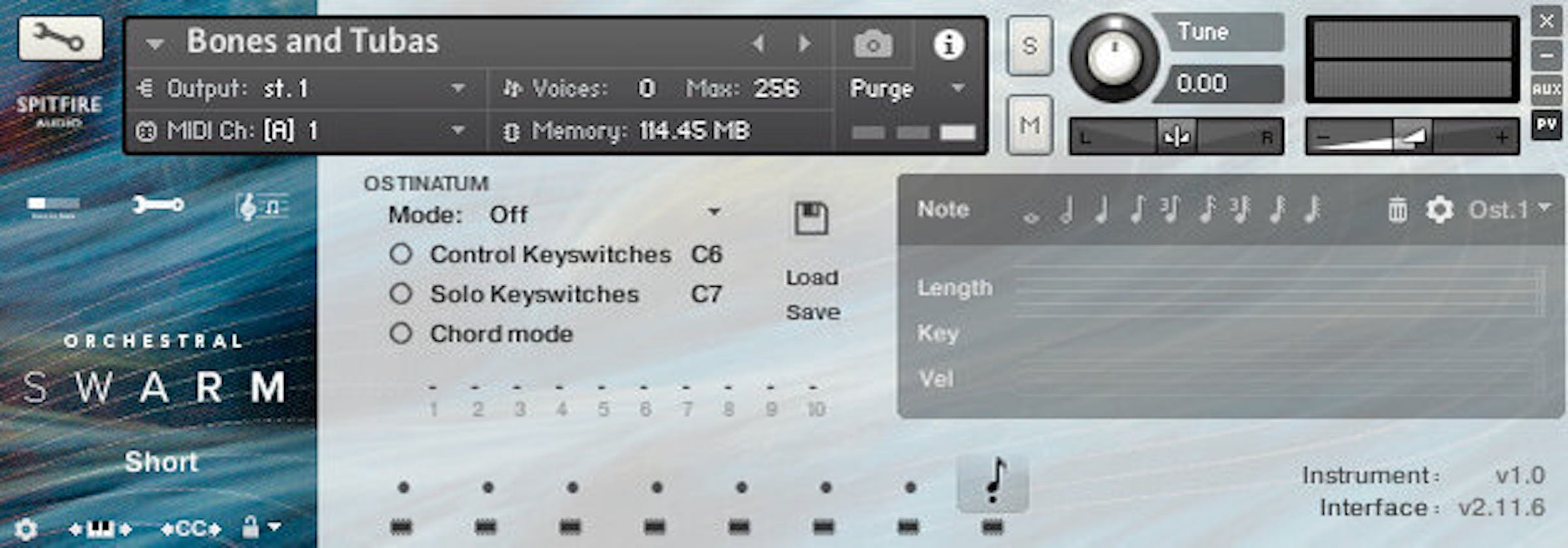
The Ostinatum
In this view you can add notes to a pattern sequencer, select which key it triggers on and then play for instant ostinato creation. It’s like an arpeggiator on a synthesiser.
What's included
Instruments
Strings high
- Combo swarm
- Combo swell
- Flautando swarm
- Pizzicato swarm
- Short pizzicato
- Short spiccato
- Short swarm 1
- Short swarm 2
- Short swarm harmonics
- Spiccato molto sul pont
- Tenuto CS tasto swarm
- Tenuto swarm
- Whisper swarm
Strings low
- Combo swarm
- Combo swell
- Flautando swarm
- Pizzicato swarm
- Short pizzicato
- Short spiccato
- Short swarm 1
- Short swarm 2
- Short swarm harmonics
- Spiccato sul pont
- Tenuto CS tasto swarm
- Tenuto swarm
- Tenuto trem swarm
- Whisper swarm
Woods high
- Air swarm
- Clari whisper swarm
- Combo swarm
- Flute whisper swarm
- Flutter swarm
- Short
- Staccatissimo swarm
- Tenuto swarm 1
- Tenuto swarm 2
- Tongued swarm
- Upper mordent swarm semitone
- Upper mordent swarm wholetone
Woods low
- Bassoon pop
- Combo swarm
- Flutter swarm
- Slap staccatissimo
- Sparse swarm stacc
- Tenuto swarm
- Tongued swarm
Horns
- Flutter swarm
- Muted swarm
- Short
- Staccatissimo swarm
- Tenuto swarm
- Tonguing swarm
- Upper mordent swarm semitone
- Upper mordent swarm wholetone
Bones and tubas
- Flutter swarm
- Muted swarm
- Short
- Staccatissimo swarm
- Tenuto Swarm
- Tongued swarm
- Upper mordent swarm semitone
- Upper mordent swarm wholetone
Brass
- Swells cresc
- Swells dim
Mics
- Close
- Tree
- Outriggers
- Stereo
- R88 ribbon
- Mid room
FAQs
Why do I need this library?
In this day and age, more and more is being demanded of us, and so the ability to create engaging, elegant and original music in an instant is what we all dream of. Orchestral Swarm enables this in a way that sounds graceful and intelligent, and it’s very easy to use.
What context is this library best used in?
There is a sweeping kinetic nature to this library and so it’s perfect for expansive panoramas, cityscapes and procedural sequences. A library like this is also a great textural tool to mix in with your existing libraries to add fascinating detail.
Will Orchestral Swarm blend with more ambient Spitfire libraries?
Yes. Most film scores contain orchestral material recorded in different locations. This library is recorded in a fairly dry but beautiful sounding space, with great mics and pres, so you can use the two onboard reverbs to adjust the sound to more closely match your existing palette. We find adding about 25% to your wet libraries and 65% to your dry libraries will work fine. Make sure you don’t have the dry stuff too loud either - to sound like they’re in the band, they’ve got to be in and amongst the action. If your setup is quite a dry sound, why not leaven the sound with some Swarms with a nice long hall on, to give you extra light and shade?
Read more FAQs for this productTech specs
Mac system requirements
Mac OS 11, 12 or 13
Both Intel and Apple Silicon/ARM are supported
Minimum: 2.8GHz i5 minimum (quad-core), 8GB RAM
Recommended: 2.8GHz I7 (six-core), 16GB RAM
32-bit systems are not supported.
PC system requirements
Windows 10 or Windows 11 - (Latest Service Pack, 64-bit)
Minimum: Intel 2.8 GHz i5 (quad-core) or AMD Ryzen 5, 8GB RAM
Recommended: Intel Core i7 6th gen and later or AMD Ryzen 7, 16GB RAM
32-bit systems are not supported.
File size
59.40 GB disc space required during install
29.70 GB download size
Too large to download? Choose hard drive delivery at checkout
Kontakt player
Kontakt Full or Kontakt Player 5.6.8 or higher required
